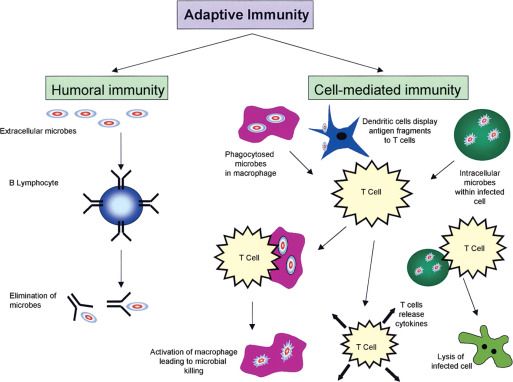The Adaptive Immune System

The innate immune system is hard-wired in our genes, whereas the adaptive immune system is acquired throughout our lives. It is characterized by a slower response than the natural response and is specific to the antigens in the environment. Moreover, it can retain long-term memory, unlike the innate immune response.
Regulatory T cells
Regulatory T cells are leukocytes that differentiate into helper, cytotoxic, and memory T cells. They are important for the body's immune response and bridge the innate and adaptive immune systems. For example, these cells can sense foreign agents and present them to T-cell receptors. They also play a key role in the initiation of adaptive immunity.
TR cells can be generated in vitro by activating CD4+CD25+ T cells. Activation causes a subset of CD4+ T cells to upregulate FoxP3 and CD25 and limits the size of the T-cell response. This process can occur following several steps, including depletion of growth signals or antigens' stimulation of the immune system.
Killer T cells
Killer T cells are lymphocytes that play an important role in the adaptive immune response. They help the immune system's B cells produce antibodies and attack infected cells. However, unlike the B cells, Killer T cells cannot act without the help of a helper T cell. These helper T cells release signal molecules, most of which are interleukins.
The researchers say that discovering Killer T cells in the human body could lead to more targeted treatments to combat autoimmune diseases and HIV. In addition, because killer T cells can attack infected cells outside the bloodstream, new research on them may lead to improved ways to fight these infections.
Antigen-presenting cells
Antigen-presenting cells in the adaptive immune system are responsible for triggering an immune response in the body. They detect antigens on pathogens and then engulf them to present them to other immune cells for processing. These antigen-presenting cells include macrophages, which process protein antigens and deliver them to T-cell receptors.
B cells are antigen-presenting cells that reside in the lymph nodes. They recognize antigens through a receptor on their membrane and then react to them by activating helper T cells. This process is known as affinity maturation.
Passive immunity
Passive immunity protects us against foreign substances and bacteria. However, it only protects us from the foreign substances we encounter for a short time. As the antibodies that trigger passive immunity do not stay in the body for a long time, they die off without being replenished. However, passive immunity protects children and babies from common pathogens in their environments.
Passive immunity results from antibodies and activated T cells that attack a specific pathogen. The antibodies that form part of the adaptive immune system are only effective against pathogens that match their antigen exactly. Passive immunity is not long-term, lasting between a few days and a few months. This type of immunity can be acquired either naturally or artificially.
Innate immune system
The immune system helps to defend the body from infection by fighting off germs and other invaders. This system consists of different organs, cells, and proteins that work together to protect the body from disease. The innate immune system is born within the body, while the adaptive immune system develops after exposure to a foreign substance or microbe.
The innate immune system produces the first immune response to infections. This non-specific response occurs minutes or hours after the foreign body contacts the host. It is mediated by various cells, including basophils, eosinophils, mast cells, and the complement system. On the other hand, the adaptive immune system responds to specific antigens by generating a memory of the antigen, which leads to a more rapid immune response when the same antigen is re-exposed.




